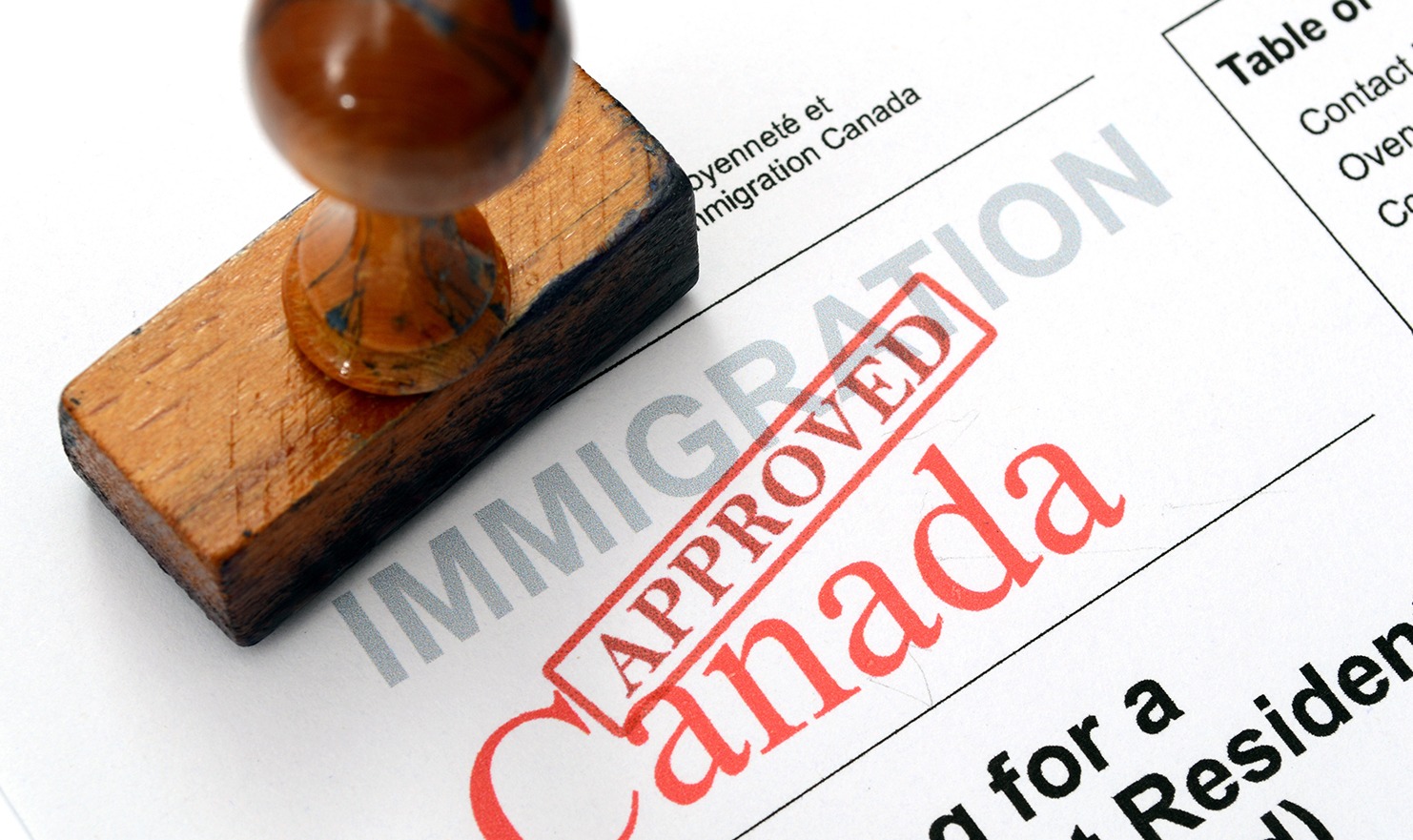Canada to Hike Permanent Residency Fees and Lower the Number of Non-permanent Residents for the Economy: Immigration News Alert

Effective by April 30, 2024, all permanent residency programs are surging due to routine IRCC adjustments for these applications. This was announced by the IRCC on March 30 and updated on April 11, for various applicant categories, exemptions based on categories, and restrictions for Permit holders and accompanying sponsored family members.
However, this routine update is unusual in a sense. The increase, intended to last for 2 consecutive years (2024-2026), has hiked immensely in an effort from the Canadian government to remedy the collapsing economy, recording a 12-13% surge compared to 5-6% in 2022-2024.
According to the IRCC, this hike reflects the latest economic change, specifically the cumulative change in the consumer price index from 2022 to 2024.
The table below will guide you through the price change for permanent residence application fees change for each category.
| Program | Applicants | Current Fee | New fee as of April 30, 2024 |
|---|---|---|---|
| Right of permanent residence fee | Principal applicant and accompanying spouse or common-law partner | $515 | $575 |
| Provincial Nominee Program; federal skilled worker class, Quebec skilled worker class; Atlantic Immigration class; and most economic immigration pilots (rural, agri-food) | Principal applicant | $850 | $950 |
| Accompanying spouse or common-law partner | $850 | $950 | |
| Accompanying dependent child | $230 | $260 | |
| Live-in Caregiver Program and caregivers pilots (Home Child Care Provider Pilot and Home Support Worker Pilot) | Principal applicant | $570 | $635 |
| Accompanying spouse or common-law partner | $570 | $635 | |
| Accompanying dependent child | $155 | $175 | |
| Business (federal and Quebec) | Principal applicant | $1,625 | $1,810 |
| Accompanying spouse or common-law partner | $850 | $950 | |
| Accompanying dependent child | $230 | $260 | |
| Family reunification (spouses or common-law partners and children; parents and grandparents; and other relatives) | Sponsorship fee | $75 | $85 |
| Sponsored principal applicant | $490 | $545 | |
| Sponsored dependent child | $75 | $85 | |
| Accompanying spouse or common-law partner | $570 | $635 | |
| Accompanying dependent child | $155 | $175 | |
| Protected persons | Principal applicant | $570 | $635 |
| Accompanying spouse or common-law partner | $570 | $635 | |
| Accompanying dependent child | $155 | $175 | |
| Humanitarian and compassionate or public policy | Principal applicant | $570 | $635 |
| Accompanying spouse or common-law partner | $570 | $635 | |
| Accompanying dependent child | $155 | $175 | |
| Permit Holders | Principal applicant | $335 | $375 |
A pattern arises that the principal applicant (main one) is always the same as their spouse or common-law partner except for family-based programs where spouse application fees are higher and business programs where the spouse one is lower.
The Permanent Residency Filteration: A Canadian Vision
The hike in permanent residency fees might have other grounds. It seems to align with the very recent change in the temporary workers cap in an effort from the Canadian immigration department to get the most qualified permanent residency applications.
These efforts are predicted to limit non-permanent resident arrivals to likely slow the pace of gross domestic product growth in 2025 and onwards.
Attracting more permanent residence applicators seems counterintuitive at first. However, to amend this current economic ordeal, Canada needs to solve the unemployment rate, broader inflation pressures, and interest rate expectations by inviting more sustainable workers.
When inverted, non-permanent resident or less permanent resident arrivals culminate in an older Canadian population, lower labour force participation, and slower growth in the government revenue base.
The results of this policy shift are that it provides a larger timeframe for supply to catch up in sectors like housing where it takes substantial time for new construction to respond to increased demand, and where affordability levels have deteriorated dramatically in recent years.
Hence, slower population growth could ease price pressures in some pockets of the economy where supply has been slow to adjust to increased demand, particularly for housing.
In the aftermath of exacerbated housing shortage and skyrocketing inflation rate, the federal government plans to scale back on the arrivals of non-permanent residents as declared in a briefing by immigration minister Marc Miller.
After consulting with the IRCC, Canada is to set a target for temporary residents for the first time starting this fall. The objective is to create a sustainable immigration system as the number of temporary residents will drop by 20% from 6.5% of the Canadian population as of Q4 last year to 5% as of the next three years.
The total productive capacity of the economy will grow more slowly with slower population growth, yet its impact on specific metrics will take effect hugely from an individual household or worker perspective— such as per-capita GDP/incomes, the unemployment rate, broader inflation pressures, and interest rates—should remain little changed from previous expectations.

A Shift in Policies For More Sustainable PR Paths
The intricate details of the Canadian government’s plans have not yet been announced. Thus, the reasoning behind the change and future alterations are mere speculation by experts in the field like Woodhaven Immigration as a true expert in legal and financial affairs.
The most drastic change aims to limit international student permits and post-graduate temporary workers under the Temporary Foreign Worker Program. The actual target rates for non-permanent residents will be announced in the fall after consultation with other levels of government and will likely shift from the initial plans.
Most economic predictions already forecasted the reduction in non-permanent arrivals to Canada. The shift in approach from the federal government implies the necessity to plummet the number of non-permanent residents in Canada by about 20% over three years, to host nearly 500,000 fewer people. Nevertheless, the pace of growth will likely be slower than previously assumed as adjustment takes some time to echo in rentals or interest rates and so on.
Slower GDP growth & Per-capita Output Minute Change
When the population grows through immigration, it surges both the capacity of the economy to produce and the demand for those products as every added resident is also a consumer. On the contrary, slower population growth will both reduce the demand and the supply of workers simultaneously.
That will impact the total production and income earned. Thus, the population of non-permanent residents needs time to decline even after limits on new arrivals. However, Woodhaven Immigration expert, Simon Deek, believes that slower population growth could make the economy grow about 0.5% less than previously expected by the end of 2025.
Canadian productivity, measured per hour of productive labor, growth could be higher than this as Canada has a historically poor record of not fully utilizing the skills of new arrivals.
Slower international arrivals: Population to Age more quickly
Immigration is a vital solution to counter the economic impact of the increasing number of people leaving the workforce as the baby boom generation reaches retirement age.
The retirement of this generation results in reduced tax revenues for governments, while the demand for services such as healthcare and social security continues to increase, leading to a significant funding gap.
Reducing the share of non-permanent residents in the total population will make the population older. However, new arrivals are generally younger, and immigration helps slow population aging. Therefore, it is imperative to encourage immigration to mitigate the long-term demographic challenges and prevent significant economic consequences.
Older Population = Lower Labour Participation
Younger population = more taxes & immigrant labor. Slow immigration = less.
Non-permanent residents have a higher labour force participation rate at 74.2% compared to the broader population’s 65.6%. This gap remains significant and may increase if new international student graduates are included. 25% of non-permanent residents currently studying in Canada without a work permit represent potential future workers, with positive labour market outcomes if they choose to stay in Canada.
Slowing Population ease pressure on Housing Not Long-run Supply
Slower population growth might slow house price and rent growth in future years but isn’t likely to solve Canada’s affordability problem.
Population growth does not necessarily affect the overall supply and demand balance in the economy because the economy’s ability to produce and the total amount of demand/consumption increase at the same rate. However, the mismatch in the timing of demand and the economy’s ability to respond with higher supply can have significant short-term impacts. This is particularly evident in the housing market, where population growth immediately increases demand for housing, and builders have been struggling to keep up with the demand for some time. As a result, there is now a severe shortage of housing, which has led to a surge in rental prices and an increase in home buying costs tied to higher interest rates.
Canada has had a housing shortage for decades, predating recent population growth. Reducing housing demand may also reduce the construction workforce. To sustainably improve housing affordability, the supply side’s capacity limits must be addressed in the long run.
Housing market faces excess demand. Only 242k new homes constructed last year, while the population grew by 1.2 million. Canada’s immigration rate is growing faster than advanced economies. Capping immigration may not reduce home prices.




